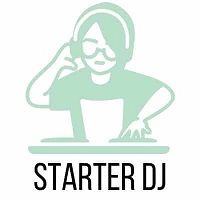The 13 Most Popular DJ Genres (+ Examples)
If you’re looking for music genres to DJ with you’ve come to the right place. I’ve compiled a list of DJ genres including examples of the specific genres.
Overall you can DJ with any genre, but not all genres are very common within the DJ industry. For example, gospel music, jazz or classical music. In this list below I’m going to share the genres that are most used in the DJing industry.
EDM Music Genres for DJs
Electronic Dance Music, or EDM is a term for a broader range of music styles. Like the name Electronic Dance Music already suggests, it’s electronically produced music, made to dance to.
There are a lot of DJs mixing with EDM. With a lot of instrumental parts in the song and also containing intros and outros, especially beginner DJs lean toward EDM because it’s one of the most easy DJ genres to learn how to DJ.
Let’s go over the EDM subgenres used by DJs:
House
Wildly popular music style that has been around since the late 1970’s. African American DJs and DJs from Chigago prepared the way for House music to eventually reach other cities in America like New York City.
The BPM of house music is often between 115-125 BPM. House music has a number of popular subgenres which are all popular DJ genres including:
- Progressive house
- Emerged in the 1990s, originated from American and European House Music
- Deephouse
- Originated in the 1980s with tempo range from 110-125 BPM.
- Future House
- Emerged in the 2010s in the UK. This is one of the most modern styles of house. BPM often ranges between 120-130
Techno
Originated in Germany in the 1980s. It grew in popularity in Europe since then, besides growing in popularity in Germany the music style also grew in the UK, Belgium and the Netherlands.
With a tempo range of 120-150 bpm, Techno music is often has more tempo then house music.
Trance
Trance music tempo is often between 135–150 BPM. Also faster than house music. Trance music arose form the combination of British new age music and german Techno. Like the name Trance already suggest it’s got a hypnotic vibe to it, almost like taking you into state of trance.
One famous trance DJ that you probably know is DJ Tiësto.
Dance
Dance music is often characterised by the vocals in the track. A lot more vocals than the previously mentioned DJ genres. Some popular Dance DJs are Joel Corry, Purple Disco Machine and David Guetta.
Dance music also became more popular among the mainstream/pop and R&B when artists like Usher, Kylie Minoque, Britney Spears and Christina Aguilera, started using them in their songs. Often referred to as Dance Pop.
Drum & Bass
Characterized by fast beats typically between 165–185 BPM. Like the name suggests drum & bass is also characterized by a heavy bass, but also samples and synthesizers. The genre originates from the UK’s rave scene in the 1990s.
Other DJ Music Genres
Now that we’ve gone over the EDM music genres let’s go over the remaining music genres.
Pop
Pop music might be the most popular music genre. The name “pop” stands for Popular. So this is not really a genre but more a mainstream style of music, often commercial music. Created for the public, to make money.
Pop music might be one of the hardest DJ genres to DJ with because of the frequent vocals. I highly recommend downloading DJ friendly music from DJ Pools, if you plan on DJ with pop music.
Tempo of pop music can be anywhere between 80-130 and will have a short intro, often 4 bars in length.
R&B
R&B, short for rhythm and blues, originated in the 1940s among African American communities. In the late 1980s, the R&B that we know today was created. A combination of rhythm and blues with elements of pop, hip-hop, soul, funk and even electronic music.
R&B is a music style that’s often a lot lower in BPM than other music genres. R&B tempos often range between 60-80 BPM.
Hip-Hop
Hip-Hop, or also known rap music is also a popular music style among the world. Also in the DJ industry Hip-Hop is often used by DJs. Hip-Hop originated in New York City in the 1970s. It’s characterized by the rhythmic drum beat and rapping.
Like Pop music, Hip-Hop is tempo ranges between 80-100 and contain a lot of vocals.
Dancehall
Dancehall is a Jamaican music style originated in the 1970s. Dancehall can be characterised by amazing use of instrumentals. Since 2010 Dancehall has also gained a lot of popularity in western countries.
Dancehall music contains nice singing vocals and the BPM can range from 90-110.
Reggaeton
Reggaeton originated in Panama in the late 1980s and later became very popular in Puerto Rico. Reggaeton has evolved from the music genre Dancehall that I previously mentioned. Reggaeton as we know it today is influenced by Hip-Hop, Latin and Caribbean Music. Starting in 2010 this music genre has also been increasing in popularity in western countries.
BPM in Reggaeton music is often between 90-110 BPM and contains a lot of vocals like R&B, Hip-Hop and Pop music.

